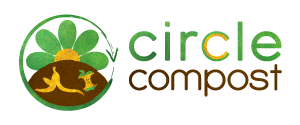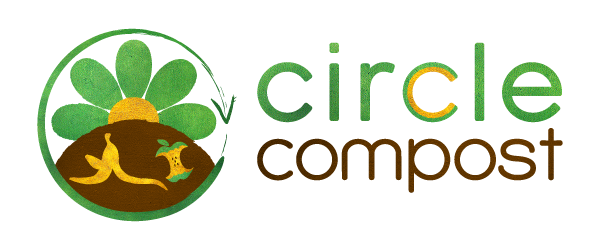Earlier this year, we connected with one of Philly’s amazing people, Lisa Gaidanowicz, founder and executive director of Urbanstead, the teaching and community oriented nonprofit behind Francisville Urban Farm. We discussed building a worm bin large enough that red wigglers could live inside year round, chomping on food waste and semi-finished compost. Well, we done built it back in March and the wigglers prospered throughout the hot Philly summer. Nowadays we’re loading up the bin with plenty of semi-finished compost to give the worms lots of insulation to keep them alive through the winter … fingers crossed! Here’s a look, in photos, at the building of the bin, followed by a recent shot of the bin, all loaded up:
The building of the bin was a collaboration with one of our other nonprofit partners, Grow Philly, winner of the 2017 SustainPHL Social Impact Award. This photo shows Grow Philly’s Mr. Matt and Farmer Chas measuring out the bin’s space with pallets laid onto what will be its cinder block base:

After measuring things out, we cut wood to size for the base. Here’s Farmer Chad laying out the wood we cut, preparing it to be bolted into the cinder blocks beneath it:

Here’s a shot of the base after we bolted the wood into the cinders, and a photo taken after the next step of attaching a layer of fine mesh material to catch castings while allowing hearty compost tea to pass through:

Next, we screwed pallets into the wooden base, then covered them with 1/4″ hole wire, also screwed down:

We stuffed the back and side pallets with salt hay to absorb rain water and hold moisture as part of our effort to keep our wiggly friends as comfortable as possible:

Around four hours after we started building, the bin was nearly complete, and we called it a day. We would build and return to install the bin’s hinged front later:



Finally, below is a shot of it taken yesterday, loaded up with a mix of semi-finished compost made in our other aerated pallet bins on site, dried out garden waste from ‘stead, organic food waste largely consisting of fresh juice pulp / other fruit and vegetable kitchen waste, shredded paper, and 3,000+ red wigglers. By using cinder blocks as a base to elevate the bin, we can capture compost tea produced by the bin in trays placed between the cinders (if you have questions about making compost tea and/or how to use it, contact us, we’re happy to help!). We also lined the outside of the pallet walls and back facing the fence with the same fine hole mesh screening material we used below the bottom layer of pallets. We’ll add to it again before winter so the worms will have even more yummy organic material to keep them warm, and we hope to report back with news of healthy worms in early spring.

Got your own worm bin or vermicomposting system at home? We’d love to hear about it and see some photos! Comments welcome, as are notes to info [at] circlecompost [dot] com.


Leave a Reply
Your email is safe with us.
You must be logged in to post a comment.